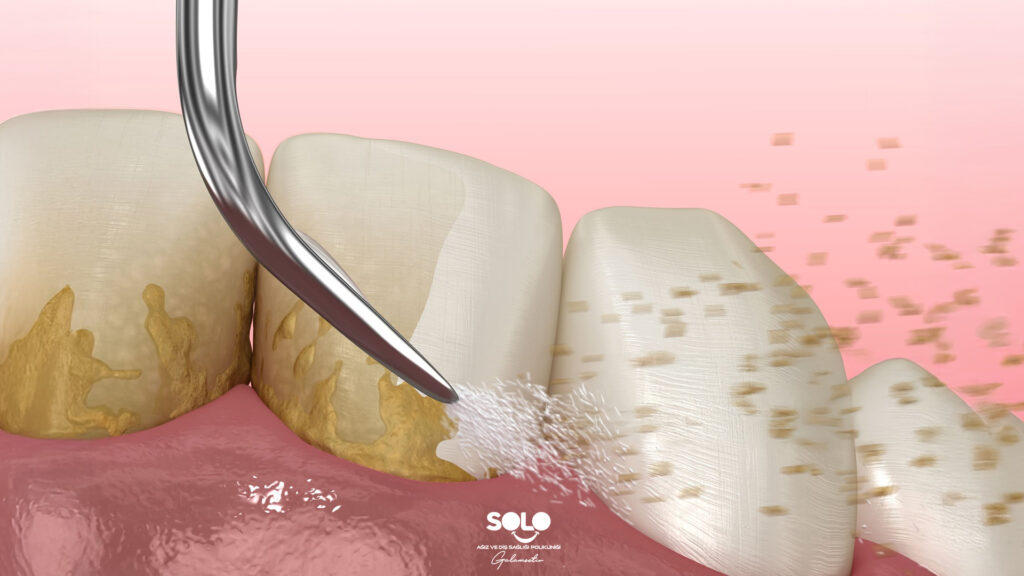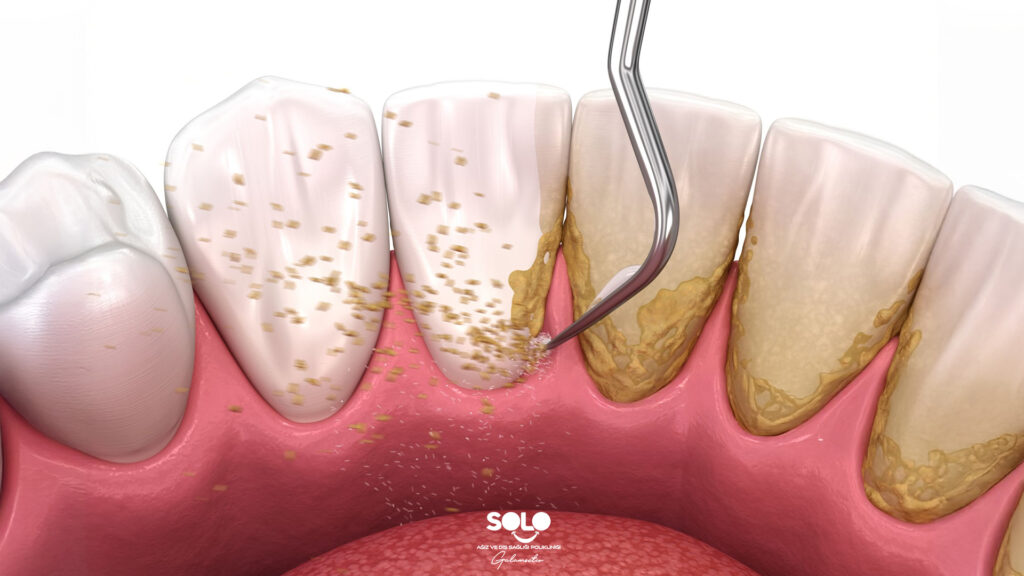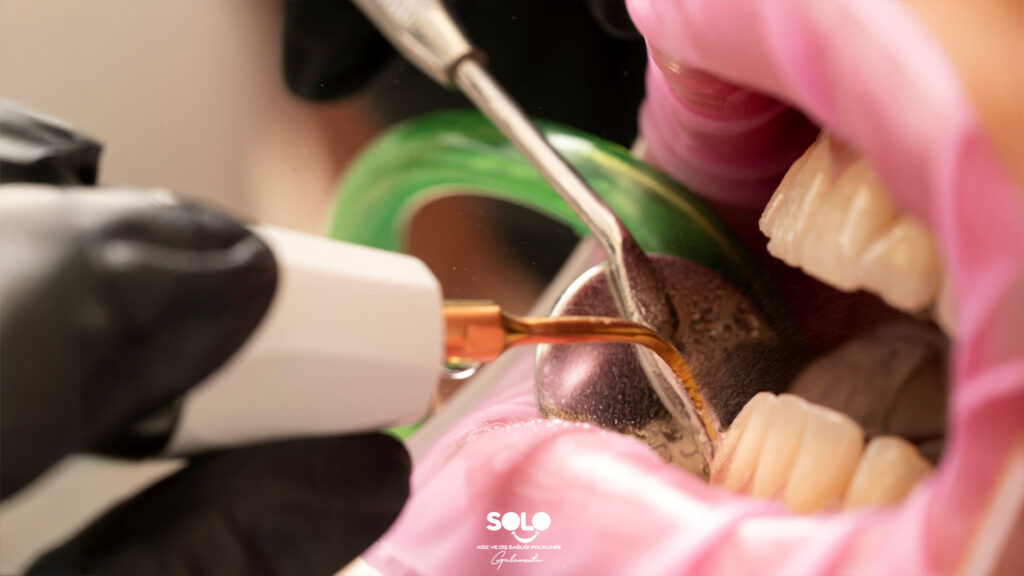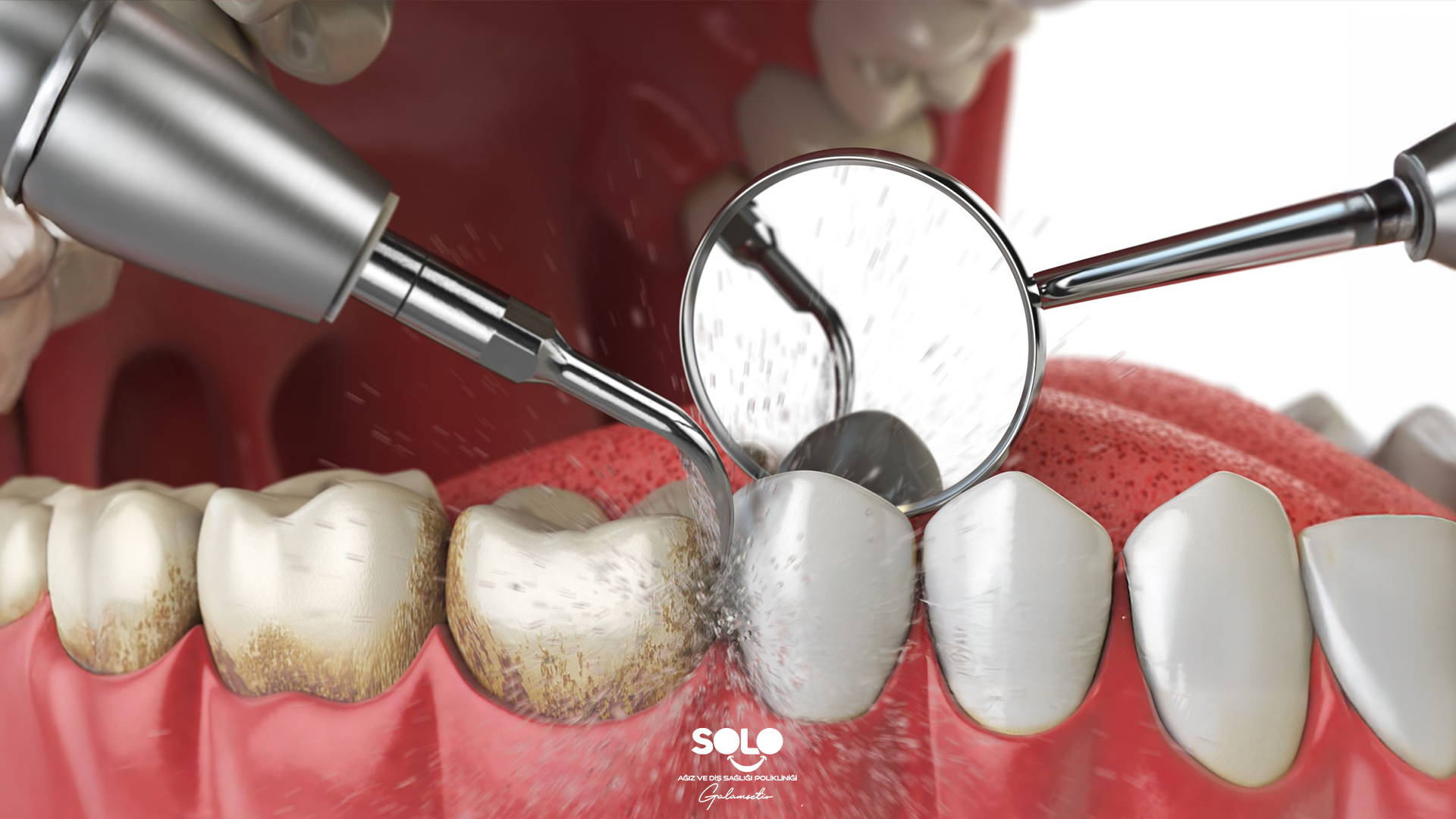How to Clean Teeth Tartar
Our smile is one of the strongest first impressions we make on others. Healthy, clean, and white teeth are one of the most important elements that complete this smile. They boost our self-confidence and have a positive impact on our social lives. However, even if we brush our teeth regularly, a hard, yellowish or brownish layer can form on their surfaces over time. This layer is known medically as “dental tartar” and colloquially as “calculus.”
Dental tartar is not only aesthetically unsightly; it can also be a sign of serious problems, including bad breath, receding gums, and tooth loss. Therefore, understanding what tartar is, why it occurs, and how to remove it is crucial for maintaining both our oral health and the natural beauty of our smile.
What is Dental Tartar?
Simply put, dental tartar is a layer of plaque that forms and hardens over time on our teeth. The process begins quite innocently: bacteria living in the mouth come into contact with the food residue we eat throughout the day. Added to this is the minerals found in our saliva, which form plaque, a soft, sticky layer on the surface of our teeth.
Normally, this plaque can be easily removed with regular and proper brushing and flossing. However, when cleaning is neglected or certain areas are not brushed thoroughly enough, plaque combines with the minerals and hardens, forming the hardened plaque we call “dental tartar.”
In a sense, tartar is our teeth’s silent rebuke, saying, “You’ve been neglecting me a bit.” Unfortunately, over time, this silent warning can lead to a host of problems, from bad breath to gum problems. Therefore, instead of ignoring it, understanding its formation and taking preventative measures is crucial for our oral health.

What Causes Tartar?
The main causes of tartar formation are:
- Poor oral hygiene – Not brushing regularly and correctly
- Not flossing – Not removing plaque from between teeth
- Excessive consumption of sugary and acidic foods
- Insufficient water consumption – Decreased oral hygiene
- Smoking – Yellows teeth and accelerates tartar formation
In essence, tartar is the result of both neglect and dietary habits.
What Happens If Tartar Isn’t Removed?
Thinking, “There’s a little tartar, but what’s the big deal?” is one of the biggest mistakes anyone can make regarding oral health. Unremoved tartar constantly puts pressure on the gums, causing inflammation. This inflammation begins with gingivitis, the first stage of gum disease, and if left untreated, it can progress to much more serious conditions like periodontitis, which can even lead to tooth loss.
Furthermore, teeth can develop an aesthetically unsightly yellowish or brownish appearance, worsening bad breath, and causing tooth sensitivity. In more advanced stages, the bone surrounding the teeth can become damaged, causing the teeth to become loose and eventually fall out. In short, this seemingly small, hardened plaque can pose a serious threat to both your smile and your oral health if left untreated.

How to Remove Tartar from Teeth
The most effective and safe way to remove tartar from teeth is through a dental cleaning procedure performed by a dentist. During this procedure, the dentist removes tartar from the teeth using ultrasonic devices or special scraping tools, smooths the surfaces, and, if necessary, polishes and applies fluoride. This procedure, which takes approximately 20-30 minutes, relaxes the gums, reduces bleeding, and largely eliminates surface stains. Professional cleanings, which are generally recommended every six months, may be necessary at shorter intervals for individuals with rapid tartar formation.
While it’s impossible to completely remove tartar at home, it’s possible to slow down or even prevent its formation. Brushing your teeth at least twice a day with a soft-bristled brush and proper technique, flossing or brushing between your teeth once a day to remove plaque, reducing the amount of bacteria in your mouth with antibacterial mouthwash, limiting sugary and starchy foods, drinking plenty of water, and naturally cleaning your teeth with fibrous foods like apples and carrots is highly effective. This way, you can both preserve the aesthetics of your smile and ensure long-term oral health.
Golden Rules for Preventing Tartar Buildup
- Regular brushing and flossing
- Dental checkups every 6 months
- Avoiding smoking and excessive coffee/tea consumption
- Drinking plenty of water
- Eating a balanced diet

Tartar Removal Prices
Scaling costs can vary depending on many factors, including the city where the procedure is performed, whether the clinic is a private practice, private hospital, or public hospital, the dentist’s professional experience and area of expertise, the technological level of the equipment used, the preferred methods, the amount of tartar to be removed, and the current state of gum health. Additionally, factors such as polishing, stain removal, fluoride application, or additional care services performed during the procedure also affect the total cost.

